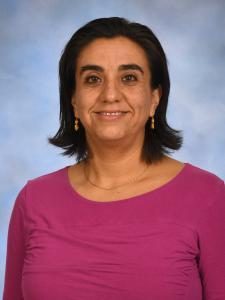Cover Crop Benefits and the Soybean Microbiome
By Dusty Sonnenberg, CCA, Ohio Field Leader: a project of the Ohio Soybean Council and soybean checkoff.
As farmers consider different production practices, they evaluate the impact each may have on a specific crop. Many of those practices also impact the soil life. Research funded by the Ohio Soybean check-off is being conducted to evaluate impacts from those practices on the soil life. One such project focuses on the understanding of winter cover crops in a corn-soybean rotation, with emphasis on the soil microbiome and the resulting benefits to soybean health and yield. “We are studying the effects of cover crop termination on bacterial and fungal communities in the soil microbiome,” said Dr. Soledad Benitez Ponce, Assistant professor, Phytobacteriology at The Ohio State University.

The soil microbiome can be defined as a community of living organisms in the soil which includes the combination of bacterial and fungal life. “The basic unit of life for living organisms is defined as a species. A group of members of the same species is called a population. A group of different populations of different species is called a community. A mixture of individuals that belong to different species of organisms makes up the soil microbiome,” said Benitez Ponce. “Some of my past research focused on how the different sequences of four-year rotations can have different impacts on corn and soybean productivity and the relationship with the bacterial and fungal communities within the soil. Since I have come to Ohio State, I have tried to continue to work with soil microbiome communities in agriculture and soybeans being one of the focus crops.”
“One research objective is to identify groups of microorganisms which consistently and positively correlate with soybean yield benefits within a corn-soybean rotation, that includes cereal rye and radish (corn-cereal rye-soybean-radish). We are looking at the effect of cereal rye termination on the microbial communities, and also subsequent soybean productivity and yield,” said Benitez Ponce.
“We have one year of data looking at how the fungal and bacterial communities are dynamic and change. The communities were stable when we had harvested the corn and were going into the time when we planted the rye. The community had stayed the same. We took measurements when the rye was growing and then before and after we terminated the rye with glyphosate,” said Benitez Ponce. “The big shift we observed was when we killed the rye with the glyphosate. By the time we planted the soybeans, we did not see that same difference in the community (from when it was corn going to rye). We are able to track the dynamics of this community and how they are changing over time.”
“One year of data is not enough, but we are starting to learn a little bit about how these communities of fungi are responding to how the cover crop is growing in the season, but in particular how the community is changed that moment when we apply the glyphosate to terminate the cover crop. Interestingly we do not see a lot of that affect in the community when we look at the fungi associate with the soybeans,” said Benitez Ponce. “There are a lot of different aspects, but we can track the dynamics of the community and how they are changing over time.”
Identification of the fungi is specific. “The DNA of the fungi in the soil is analyzed,” said Benitez Ponce. “We can identify which fungi are there at each time point in the soil. We get an idea of which are most abundant and which are least abundant of the different species of fungi present at different times in the microbiome.”